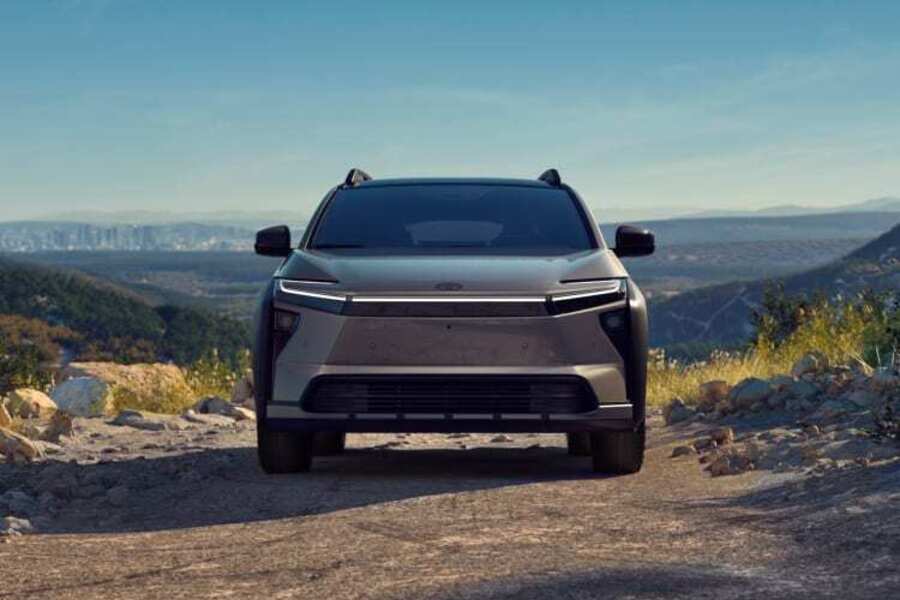Toyota is overhauling its mass-market electric crossover for 2026, cutting prices while boosting range, performance, and charging speed. The updated bZ (successor to the bZ4X) rolls in with a lower entry price, fresh styling, more powerful configurations, and an industry-standard fast-charging port—changes that should flow directly to its platform twin, the Subaru Solterra.
Key takeaways (reader quick answers):
- What changed? Lower starting price, longer driving range (up to 314 miles FWD), higher available power (up to 388 hp), faster AC/DC charging, and updated design.
- How much does it cost? Toyota cites a $34,900 entry; a trim sheet provided alongside shows the XLE FWD at $36,350—a discrepancy that likely reflects equipment and/or destination fees.
- Why does it matter for Subaru? Solterra shares this Toyota platform; expect similar tech upgrades (NACS port, range gains) with standard Subaru AWD and pricing that tracks close to the Toyota AWD trims.
- Charging standard? Yes—NACS fast-charging port is standard, plus 11 kW Level-2 AC and up to 150 kW DC fast charging.
- Range? Up to 314 miles (FWD, extended-range battery); AWD tops out around 288 miles.
Pricing and Lineup: Toyota Cuts, Not Hikes
Automakers typically raise prices when they refresh a model. Toyota is going the other way. The 2026 bZ carries a $34,900 stated starting price—$2,170 less than before—while layering in meaningful hardware upgrades. A companion trim breakdown lists the XLE FWD at $36,350 with an estimated 236-mile range; either way, entry pricing is lower year over year despite the new tech.
Selected trim deltas vs. 2025 (as provided):
- XLE FWD: $38,250 (252 mi) → $36,350 (236 mi)
- New XLE FWD Plus (Extended Range): $39,350 (314 mi)
- XLE AWD: $40,600 (228 mi) → $41,350 (288 mi)
- Limited FWD: $43,250 (236 mi) → $44,750 (299 mi)
- Limited AWD: $45,330 (222 mi) → $46,750 (278 mi)
Editor’s note on numbers: Toyota’s headline $34,900 starting price sits alongside the trim table’s $36,350 XLE FWD figure. That gap likely comes down to equipment/destination variations; the bottom line is that entry costs are moving lower while specs improve.
Hardware: Bigger Battery Option, More Power, Faster Charging
- Batteries & Range:
- Standard FWD: 57.7 kWh battery, ~236 miles targeted range.
- Extended-range FWD: 74.4 kWh, up to 314 miles.
- AWD: Now targets up to 288 miles, a notable jump from last year’s figures.
- Performance:
- Output climbs dramatically, with up to 388 hp available on upper configurations—addressing one of the outgoing model’s chief criticisms (lethargic acceleration).
- Charging:
- NACS fast-charging port standard for broader network compatibility.
- 11 kW onboard AC charger (quicker home/workplace top-ups).
- Up to 150 kW DC fast charging (significantly faster road-trip stops than before).
Why This Is a Big Deal for Subaru’s Solterra
Toyota and Subaru co-developed this EV platform, so Solterra typically mirrors Toyota’s major updates. While Subaru hasn’t announced pricing yet, expect:
- Standard AWD (a Subaru hallmark), likely making Solterra a bit pricier than Toyota’s FWD entries but competitive with the AWD bZ trims.
- Range improvements tracking Toyota’s AWD gains (the guidance here points to ~288 miles at the top end).
- The same NACS transition and charging upgrades, solving one of today’s biggest EV adoption hurdles: reliable, widely available fast charging.
If Subaru can hold the line on pricing while delivering those upgrades, Solterra becomes a much stronger alternative in the compact EV crossover segment.
Context: Course-Correcting the bZ4X’s Weak Spots
The outgoing bZ4X underwhelmed on range, charging speeds, and interior appeal relative to rivals. Toyota’s 2026 changes speak directly to those pain points:
- Range now lands squarely in the heart of the segment.
- Charging shifts to the U.S. market’s dominant connector and speeds up both AC and DC sessions.
- Power gets a shot in the arm to meet consumer expectations for instant EV torque.
- Pricing turns from a liability into a selling point.
What’s Next (and What to Watch)
- Official Subaru details: Look for Solterra pricing and EPA-rated ranges; the AWD-first strategy will shape value comparisons.
- Real-world charging curves: Toyota quotes up to 150 kW, but road-test data will tell us how long the bZ can hold peak speeds.
- Incentives & availability: Federal/State incentives and delivery timing will determine how quickly Toyota and Subaru can convert interest into sales.
Bottom Line
Toyota’s 2026 bZ resets the equation: more range, more power, faster charging, lower entry price. Because Subaru shares the platform, Solterra stands to gain the same fundamentals—likely with standard AWD and a price that tracks the Toyota AWD trims. For shoppers who previously ruled out these twins, the 2026 updates move both models from also-ran to serious contender in the compact EV crossover race.

